Missing Two Weeks (November)
Vertigo, Chicot State Park, Wildlife areas, Orphan Train
It was encouraging to hear that some of you noticed I did not post any information for a two week period in November. Well, I am going to provide that information now, because there are some things I really want to share…So here we go…
Part A: Chicot State Park
I’m back here, because I had made reservations here before I even left Wisconsin. And it worked out well for me to return here. I had a different camp site, and except for the week-ends, it wasn’t busy.
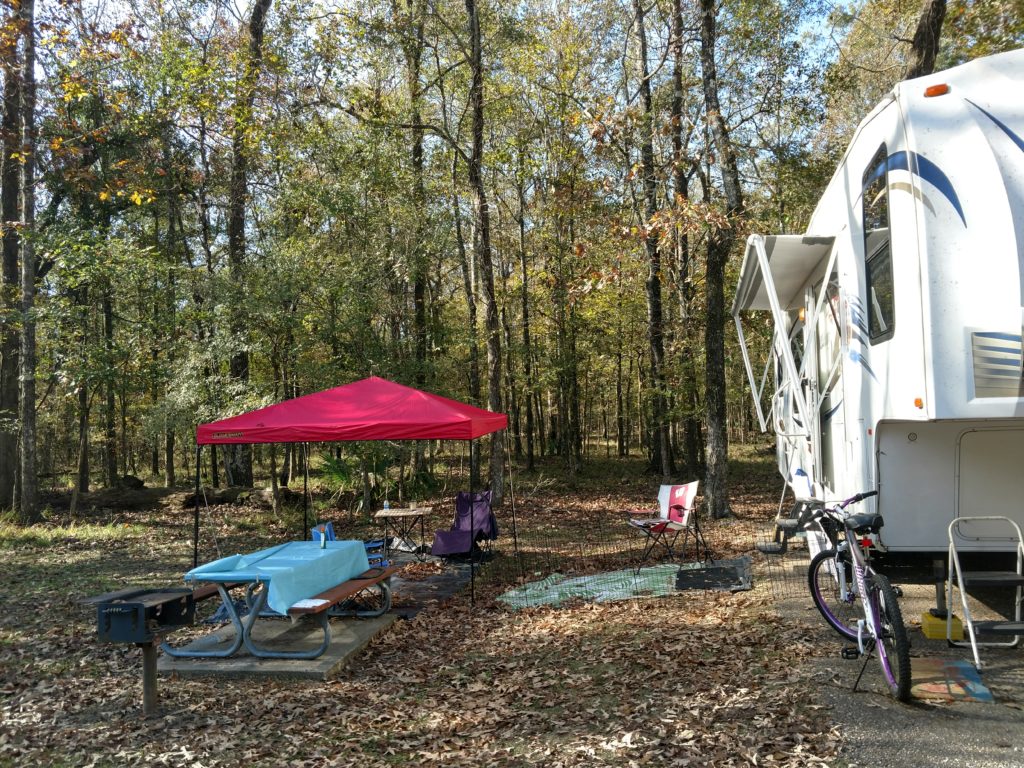
Part B: Vertigo
For any of you that have experienced vertigo, (sea sickness, car sickness, twirling round and round sickness) you know the feeling and are not surprised when it happens. But this appears to come from nowhere. Suddenly my head or body movements, (especially sitting up after sleeping) cause my head to swirl and vision to move . When bad enough, or lasting long enough, I get the nausea with it as well.
In my case, I had experienced it in Sedona two years before and made good friends with the the couple who were able to help me out at the time. The symptoms were more severe then, than I’ve experienced since. Since then I seem to have a case of it each fall. It seems to be precipitated or caused by a sinus infection and affects my inner ear. My ear doesn’t even have to be infected…I just get the symptoms.
So this happened to me shortly before I arrived at Chicot State Park. I knew I probably had a sinus infection, because I could feel the build-up and could NOT get it to drain. I woke up with mild symptoms of vertigo the first day. They cleared and I was able to carry on as normal, but aware. I drove to Chicot State Park and set up. Next day, symptoms back…3rd day more pronounced. I would have to get to a clinic and hope the symptoms settled enough so I could drive! I called to Acute Care….just walk in, no appointment. Sounds good.
Well, it just so happened, my “knight in shining armor” appeared!! (He arrived in a nondescript gray Nissan, but who am I to complain?)
My good friend, Neil, had made his way from Wisconsin birding, and was arriving that day. How precipitous !! So he drove me in, waited for me and helped me get my prescriptions! My symptoms were thought to be related to the sinus infection I had, so that was what I was treated for. I slept on the recliner so I could keep my head elevated. To lay down produced a swirling sensation that I tried to avoid! (Thank goodness over the summer I took out the couch I had and put in a sofa with recliners!!)
In the following days, (it took a couple days before it got any better) it was so nice to have Neil drive places and plan things that I could also do.
Part C : Wildlife Refuges
We visited a few Wildlife Refuges. They are wonderful places to walk with often no one around. And you walk slowly so as to spot birds and not startle them, so that was perfect for me. As long as I held my head fairly steady, I could manage OK. We hiked one Chicot State Park trail, then…
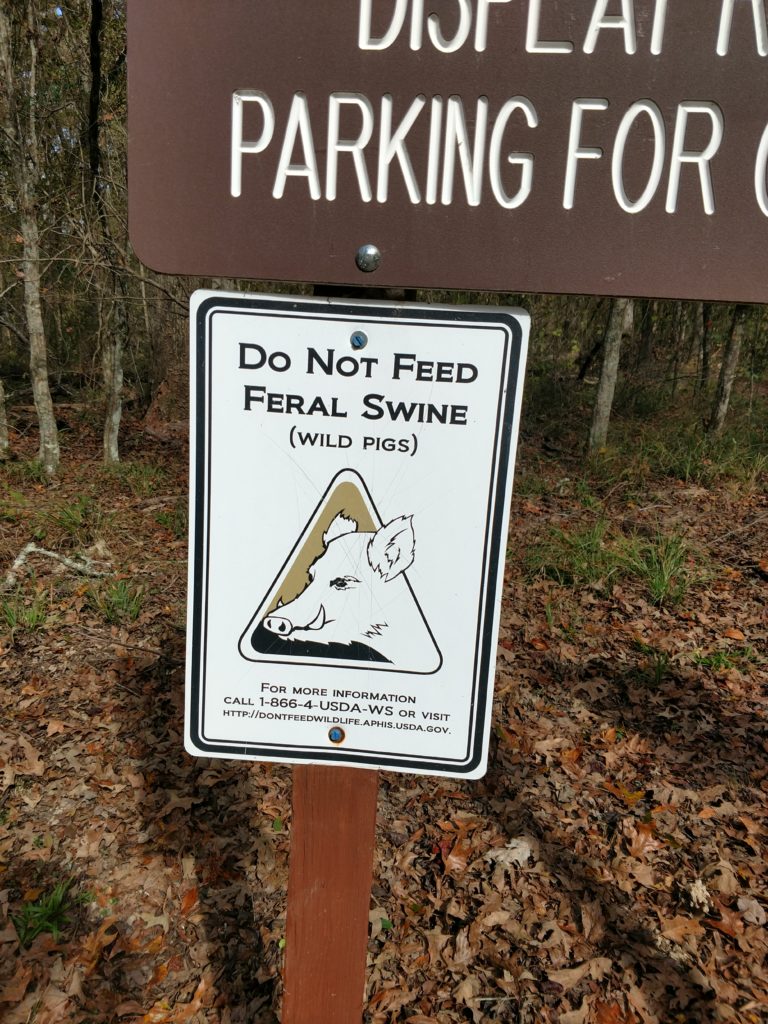
…..the Thistlewaite Wildlife Management Area, Grand Cote/Lake Ophelia National Wildlife Refuge and Spring Bayou State Wildlife Management Area. Later I walked a trail through part of the Louisiana State Arboratum, as it was a part of the State Park. One had just a boat launch, the others had trails to walk and areas you could drive through while looking for birds. Neil took the birding pictures, as he has excellent lenses for that. I took the scenic pictures. (Someday I want a powerful lens like that. The pictures are incredible. Santa??? )
Spring Bayou State Wildlife Management Area
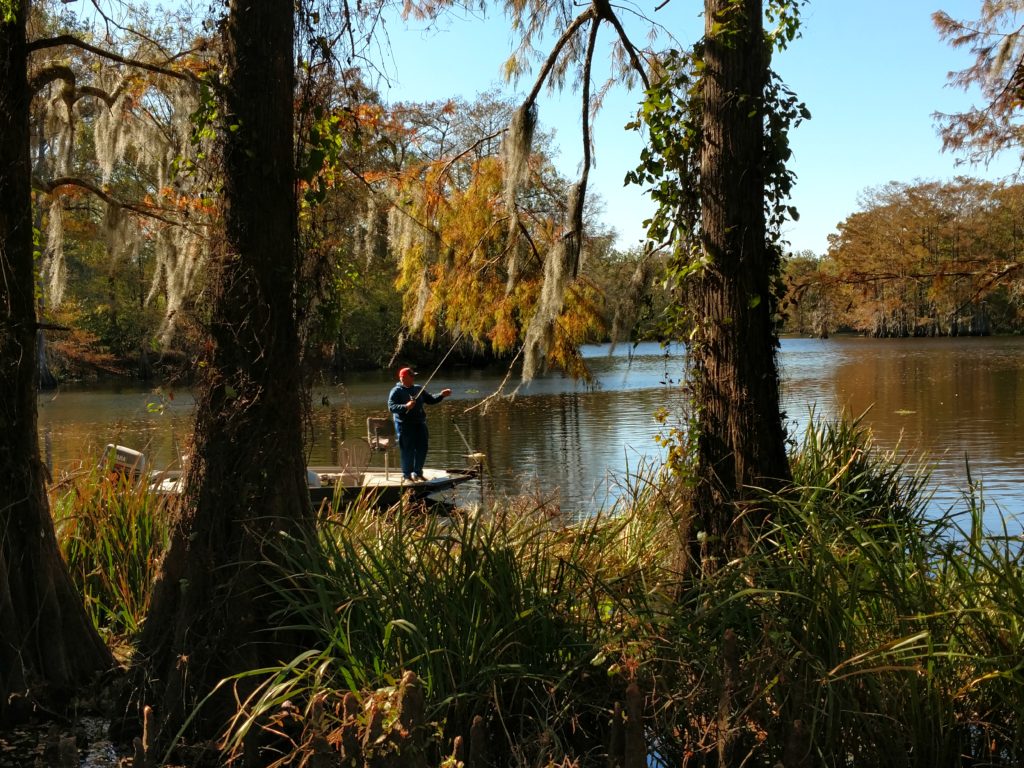
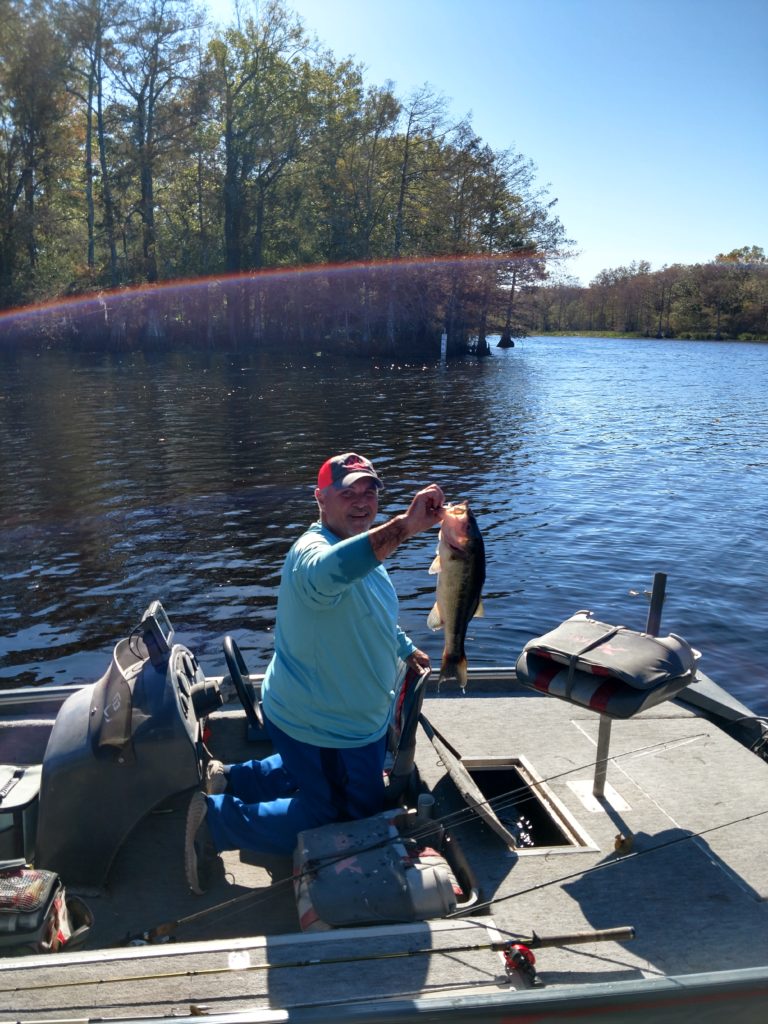
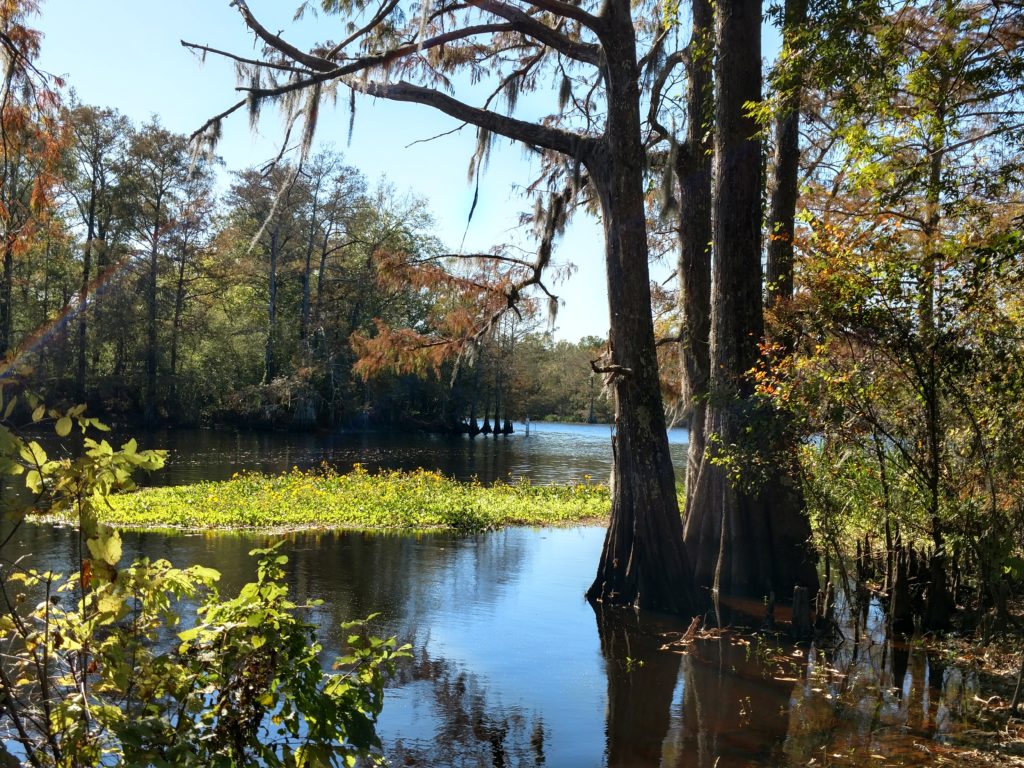
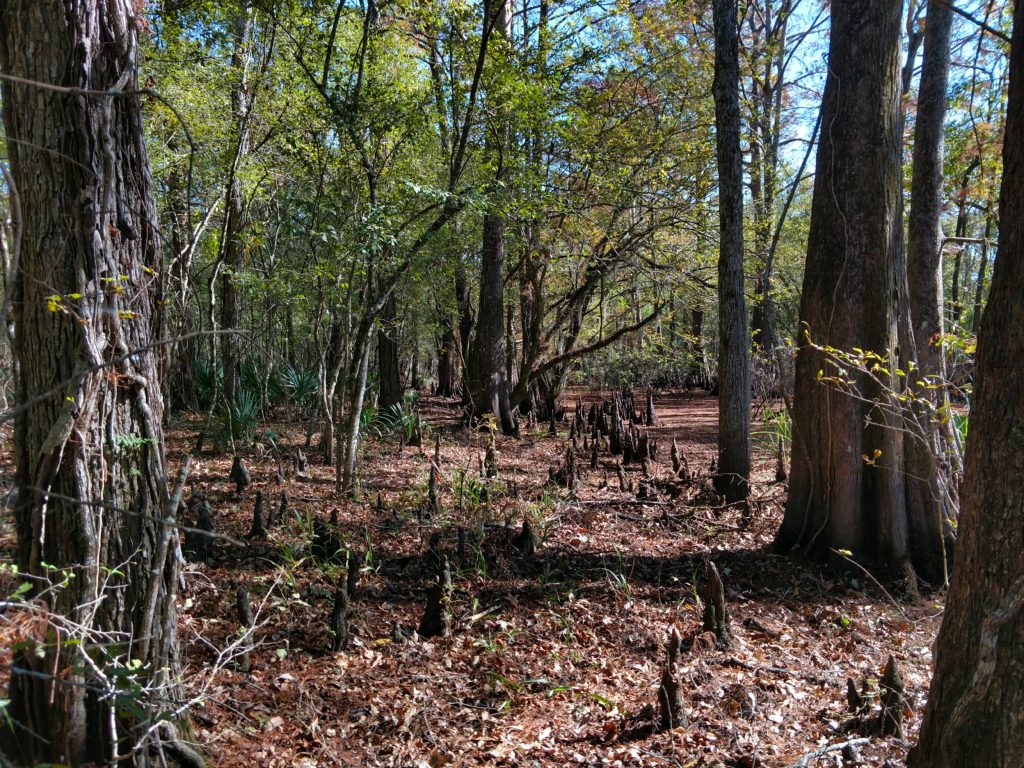
Thistlewaite Wildlife Management Area.
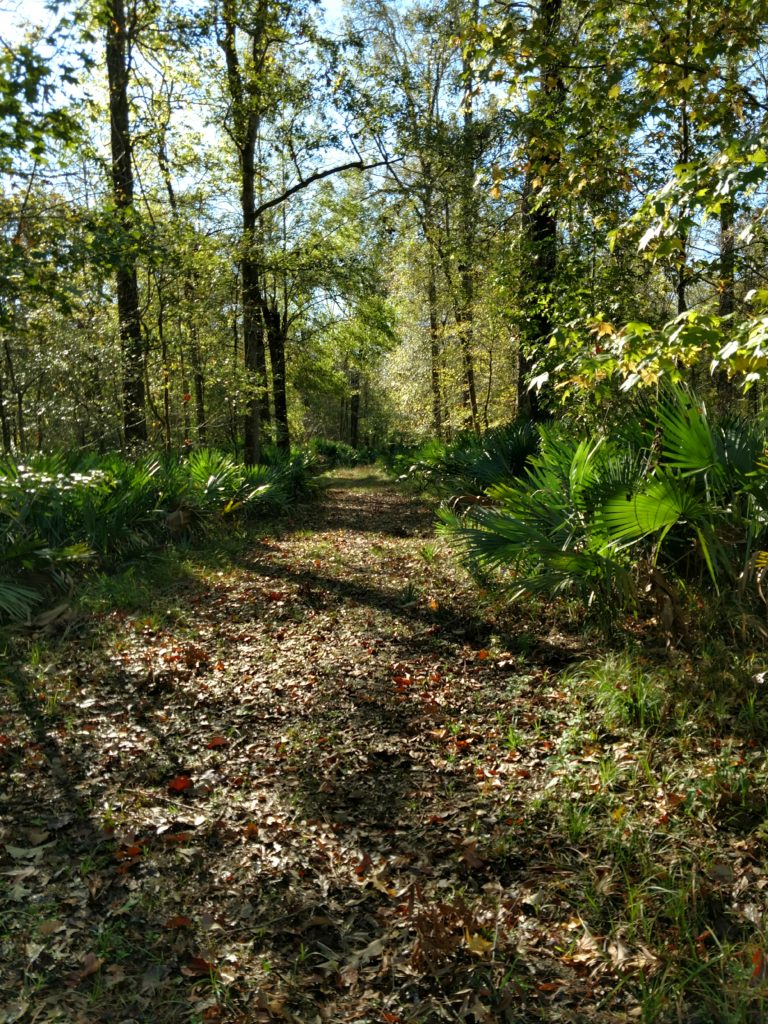

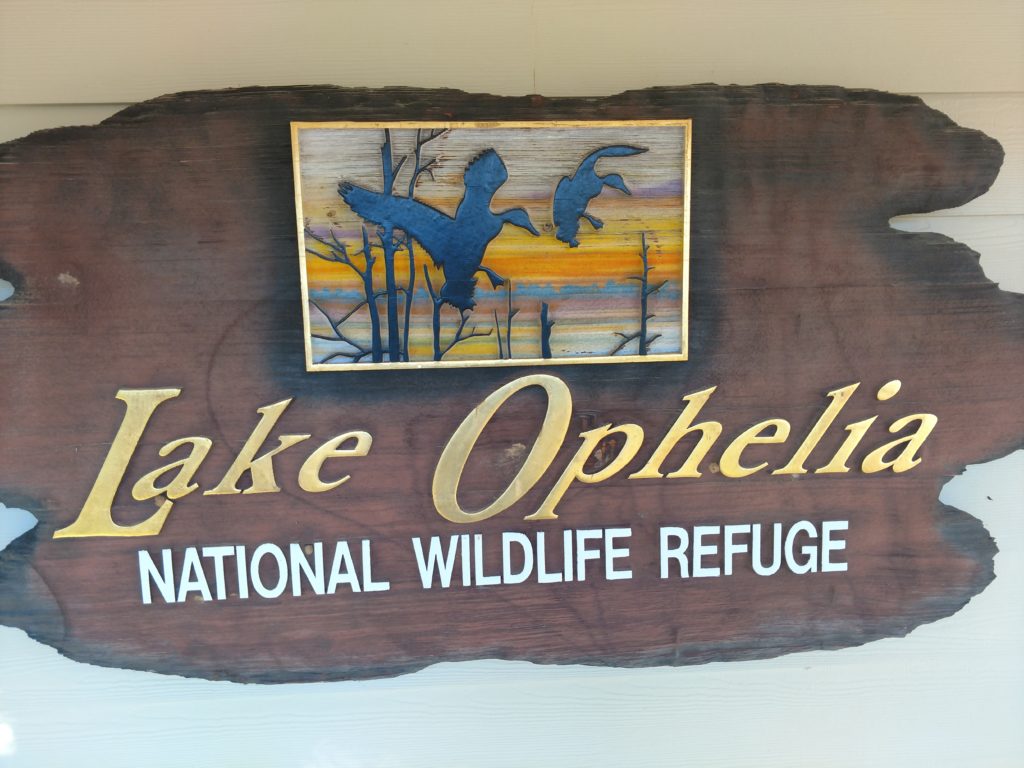
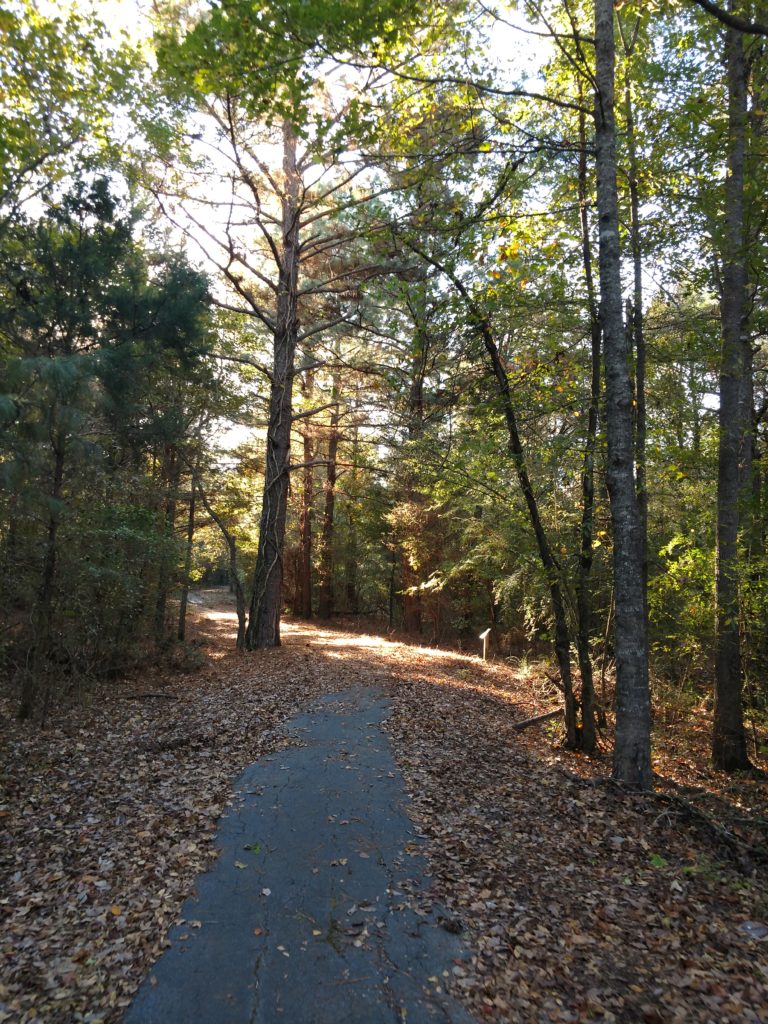
But it didn’t take long to get complicated!!
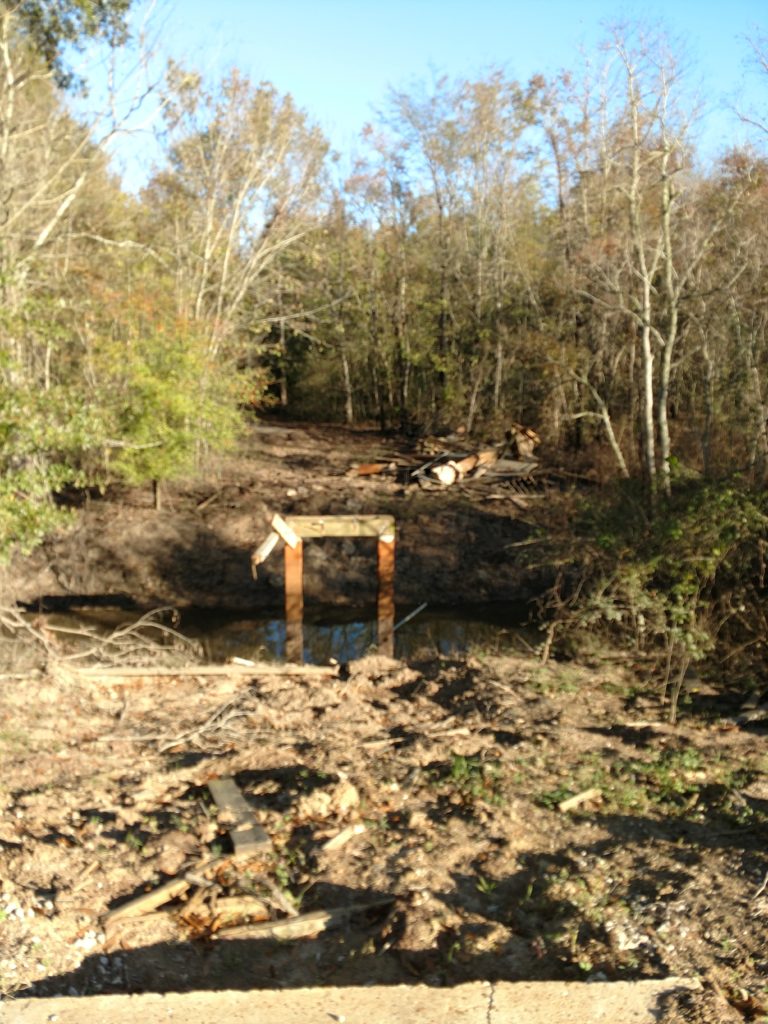
Much to our surprise, we couldn’t walk any farther! The ditch was too wide and full of water. What the heck! 😱 So we decided to take a detour and walk along the levy by the marsh. Best thing we ever did! We were there about 9:00 a.m. and we saw numerous species of ducks and birds! It was awesome! By 10:00 a.m. they were all gone. Just like that. Flew on to another place to eat apparently. Great timing!!
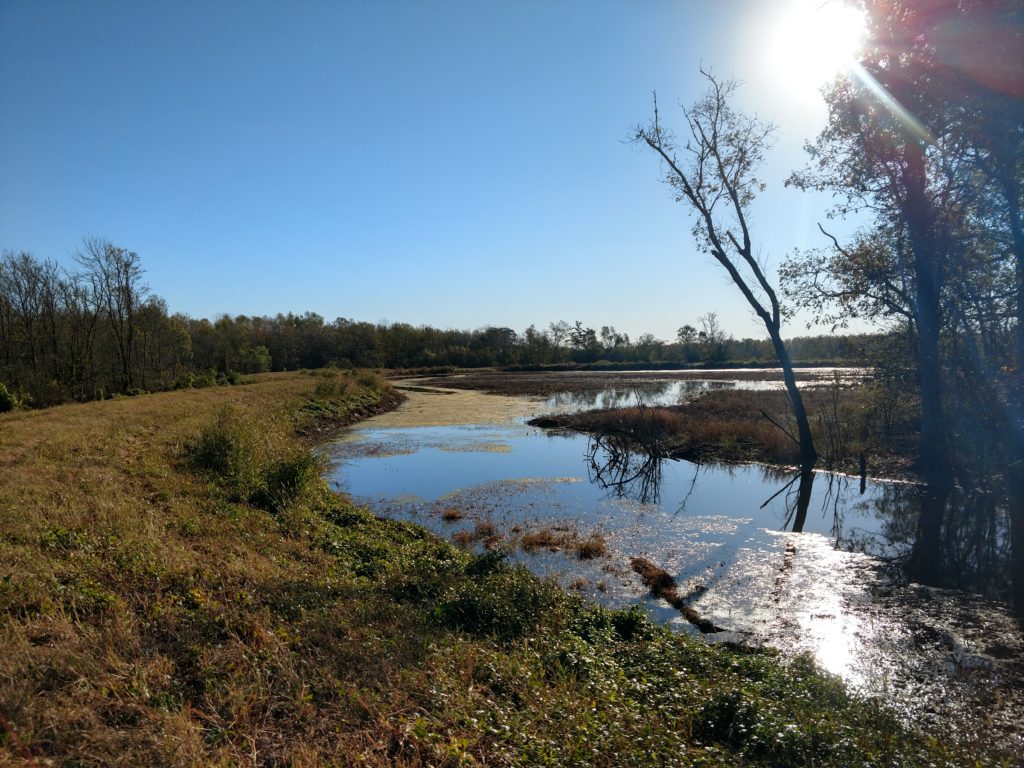
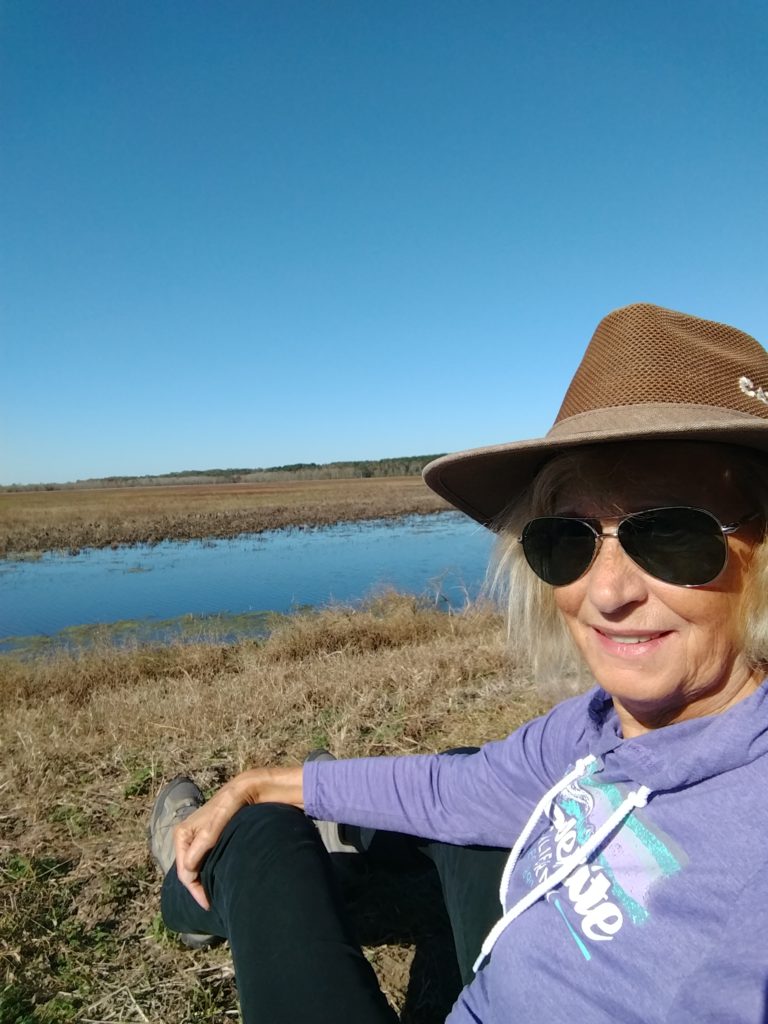
Part D: Heritage Village
We took one day to drive into Opelousas, Louisiana to visit the Orphan Train Museum and Heritage Village. It’s about a 45 min. drive north.
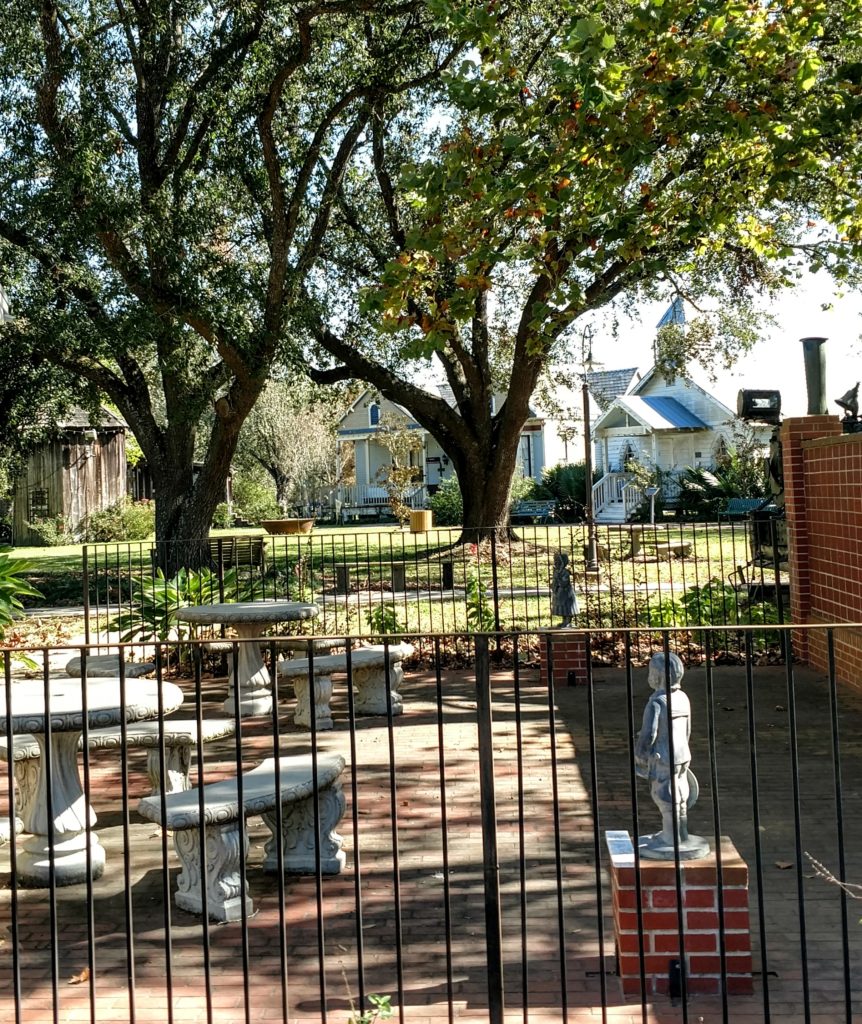
This was really a fascinating place. The museum was closed when we arrived, so first we walked around in the Village. It had the usual old restored homes, businesses, a school and a church. Hardly anyone around. But a beautiful day!
What was different here, however, was the discrimination and separation by a person’s color. For instance, this was a black church only.
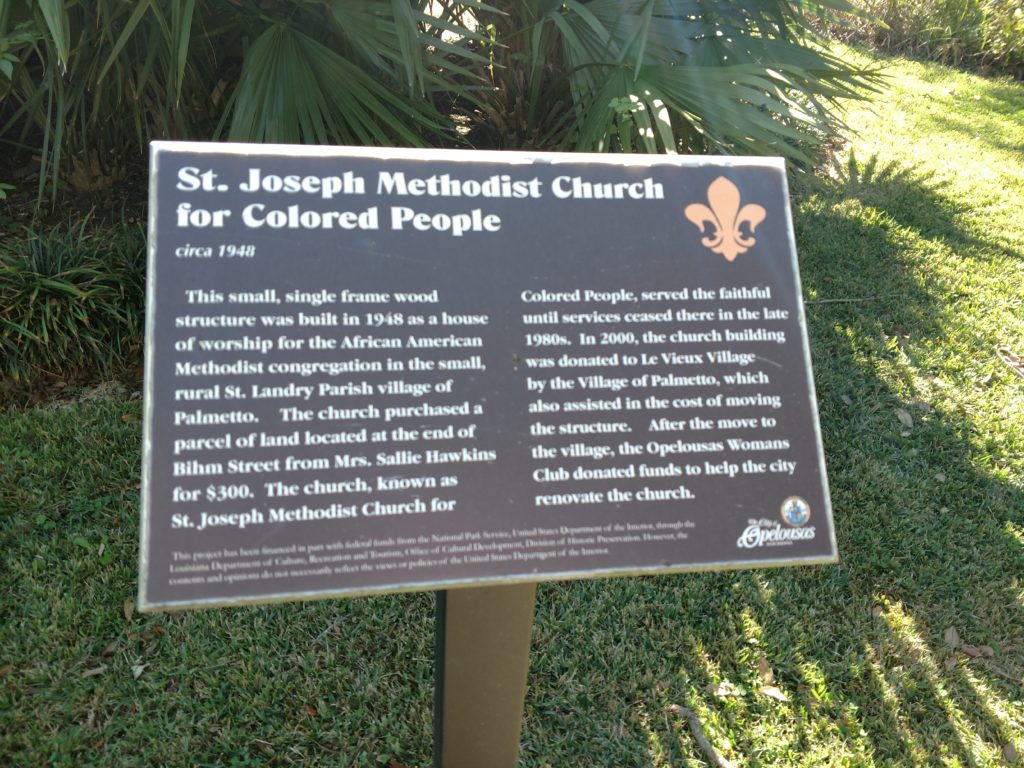
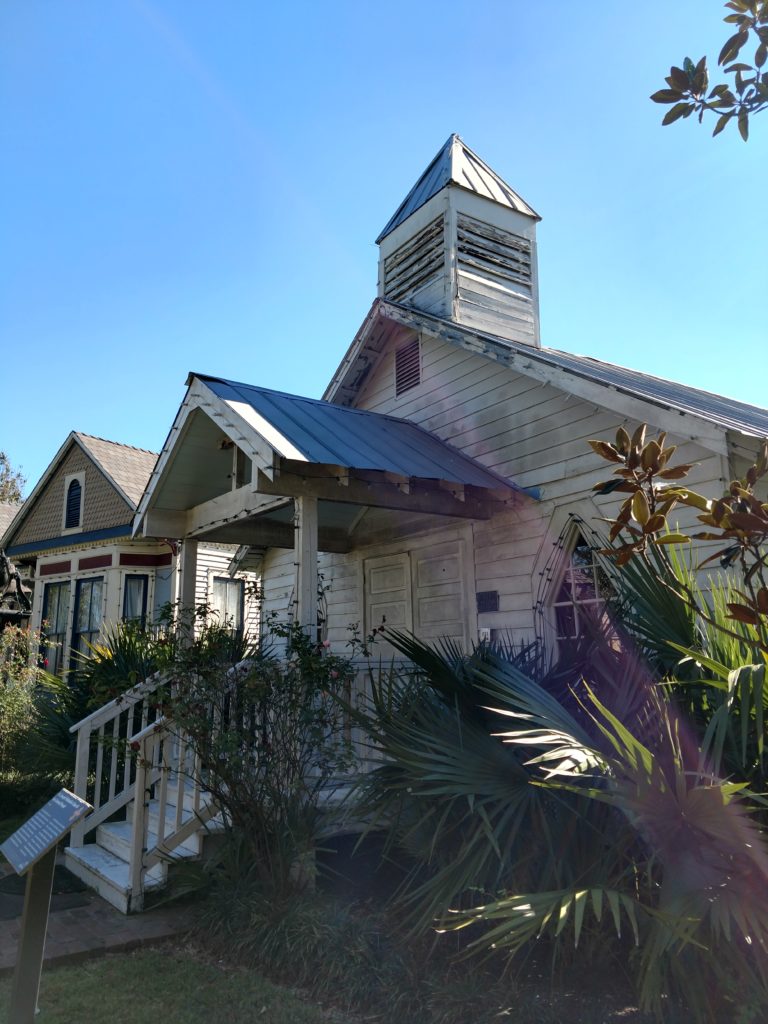
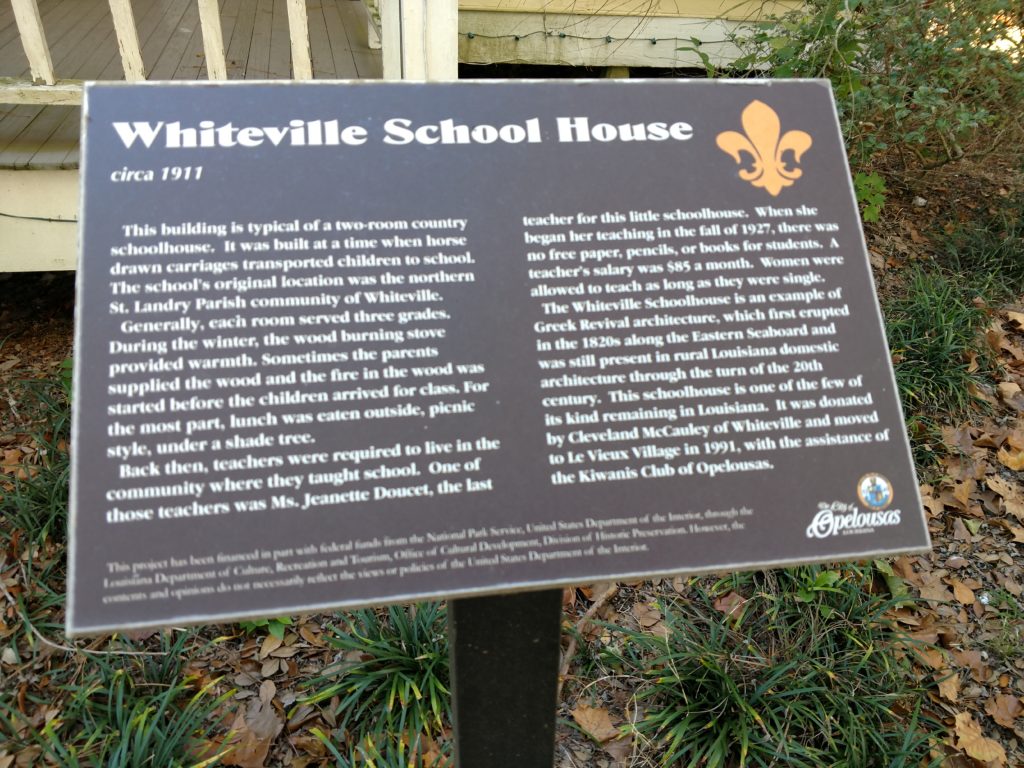
It didn’t say anything about the School being segregated. But it is interesting that women had to be single to teach, had to live in the community and all the other work that was required not related to teaching. Pretty similar to Wisconsin’s history. Oh, and $85 a month in 1927 is the equivalent of $1,234.06 in 2020! Try living on that!!
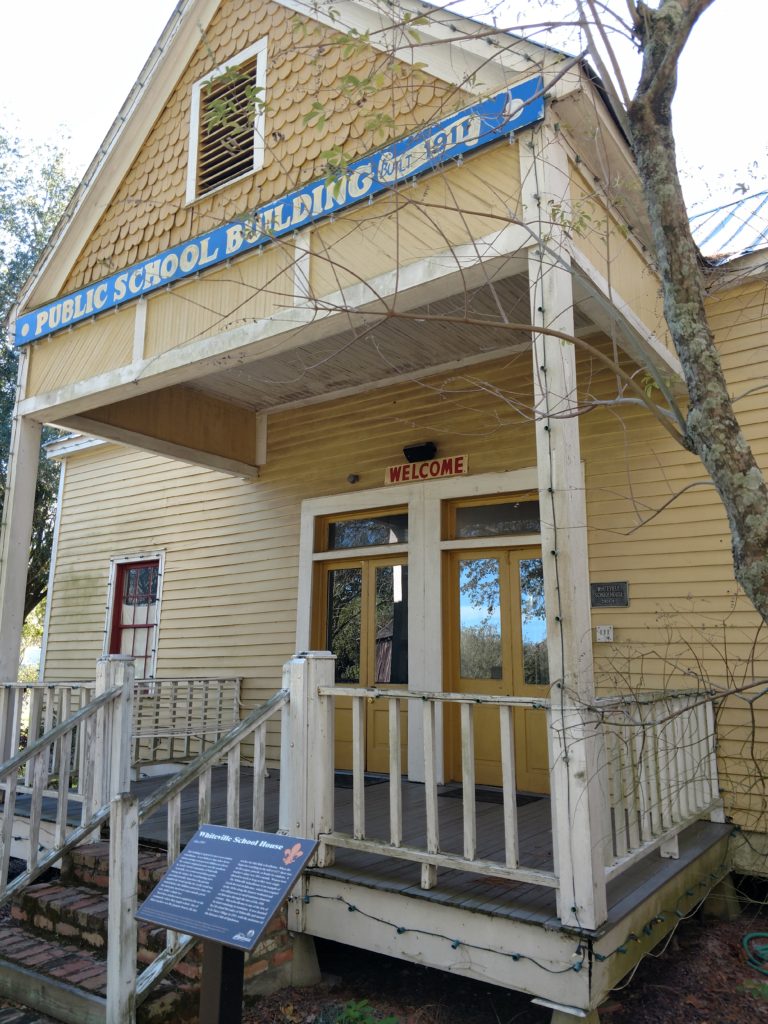
We saw one building was open, so we went in. We asked about the museum and were told a volunteer would come to open the museum, but only by appointment!! Bummer.
But, if someone is available they would come if someone was interested. The individual gave me a number to call. So I called, left a message and 20 min. later this wonderful lady showed up and gave us our own private tour!
Part D : Louisiana Orphan Train
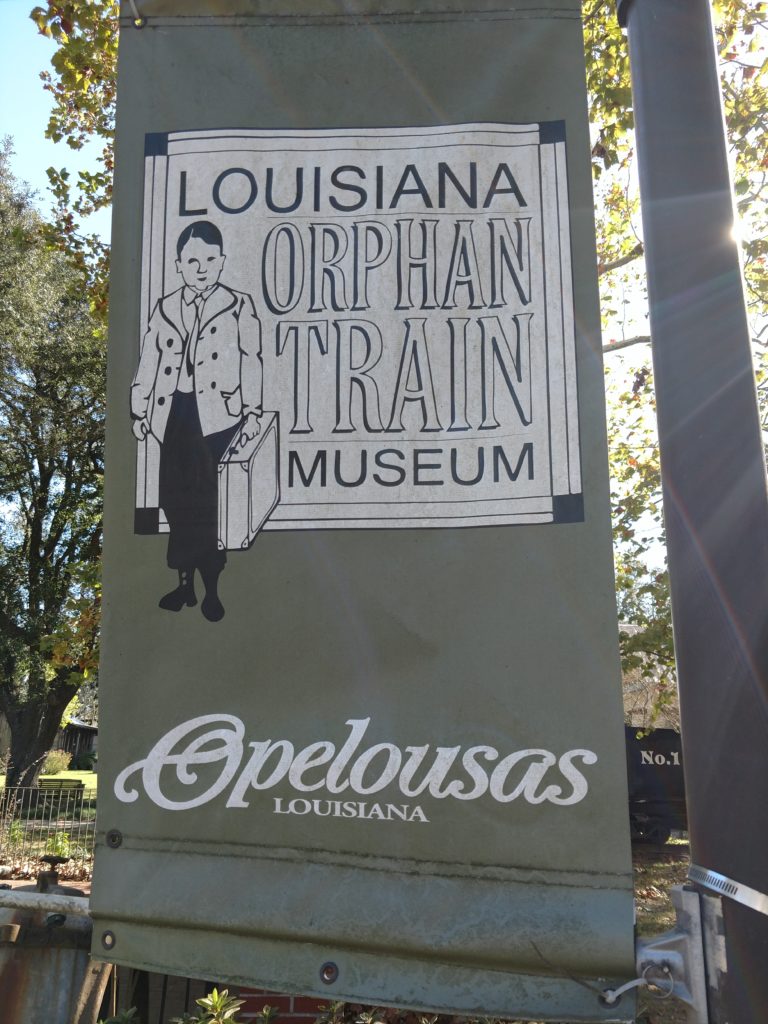
The museum was founded by the descendants of those that arrived on the Orphan trains. All the volunteers there are also descendants, so that made it all the more interesting. It was very well done, with wonderful photos and original information from newspaper accounts.
It has and keeps receiving items, clothing, travel tags etc. from descendants. As the original orphans have died, their descendants are now going through the orphan’s estates, and donating items to the museum. No one knows who actually on the trains, because no one local kept records. Which is strange considering the museums ancestors came through the Catholic Church which should have kept records.
What I thought was fascinating, was that there were two different groups handling children and orphan trains at the time. Both were from New York City. These trains ran from 1854 to 1929! 75 years! And it is believed an estimated 200,000 children were sent West on those trains. An organized, supervised, western migration. Amazing.
There was an urgent need for this help in New York City, because of its location as a major entry point for the immigrants. Once arriving, many had no job, lack of decent shelter and lack of the means to take care of their children. One organization The Children’s Aid Society, was founded to give the children foster homes because they were literally living on the streets by the hundreds, if not thousands over the years. Hard to imagine! Many were not actually orphaned, but their parents had very little to no means to care for them, so they fended for themselves on the streets. ( Some were able to find their children later, when they were doing better, and brought them back home )
All of this history had so much more meaning when I was standing at a place where these trains actually arrived, and talking to a descendant from one of them! It brought out the human element so strongly.
Children’s Aid Society
This was founded in 1853 by Charles Loring Brace. He created the society to meet the needs of the homeless, sick and disabled children. This was at a time when children were considered “chattel”. (property). He accomplished so much that we take for granted today, and enacted services that are provided today through local and state departments. He created the first free kindergarten, and enacted compulsory education legislation. His Aid Society provided warm meals, health care and get this : (something I had no idea was going on then)…protection for the kids from the Civil War draft riots in 1863!
In addition, Charles conceptualized the “immigration plan” to resettle poor and orphaned children from New York City with farm families in the West. It was hoped to deter them from a life of ” crime and poverty”. So the trains began running .
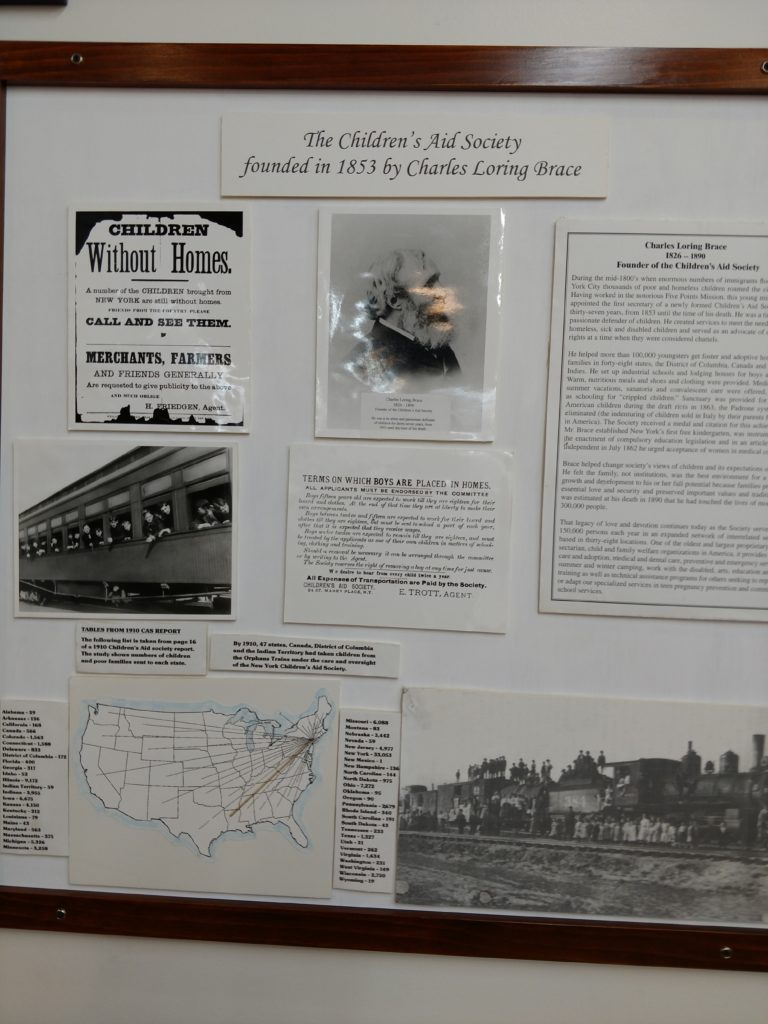
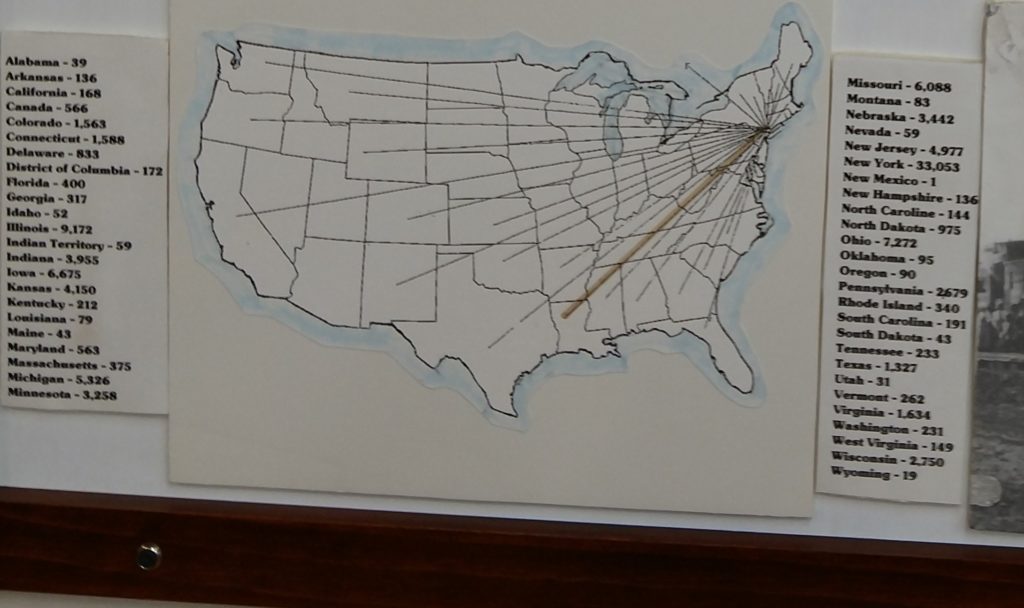
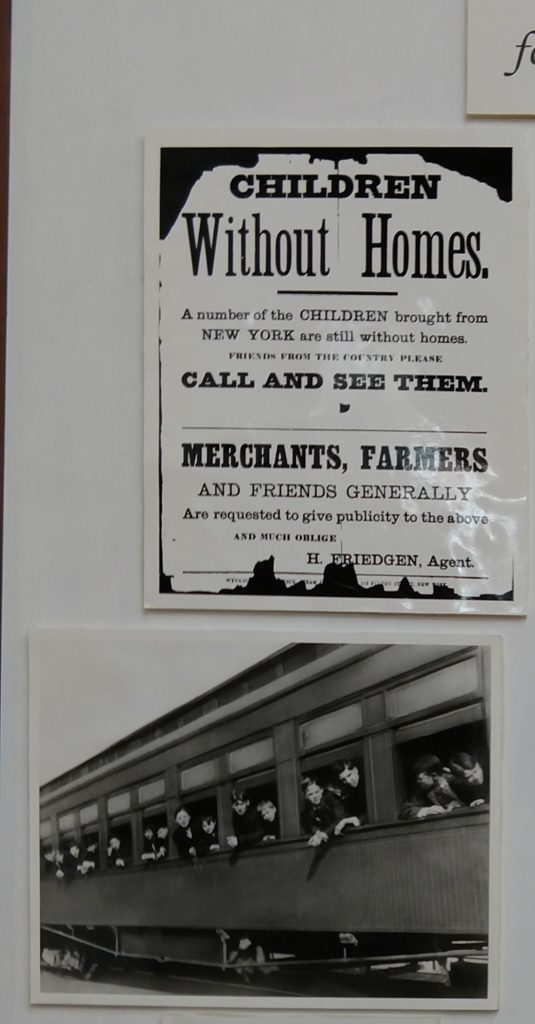
This Society is credited with child welfare reforms, child labor laws, adoption and the beginning of the foster care system. This Society is still going strong
BUT…The real problem here, was that there was no follow-up with their trains. No one looked to see if the kids were treated well or not. No one had a list of names. No one, except those at the train station, knew which kids went with who. The parents never knew where they went unless the children were later able to contact them or write to them.
The train pulled up into a city, the people and farmers who needed labor picked out the kid or kids they wanted, and that was it. Done. Can you imagine??? The agreement stated that they had to have schooling, and could later earn money working for them if they stayed after they turned 18. I wonder how that worked out. Especially then…. and how in the “middle of no where” these farms were!! They sure had few if any options to leave. Sad for so many. But perhaps they did have a better life than they would have in New York City.
New York Foundling Hospital
The orphans of the Louisiana Orphan Train museum came from this hospital based organization. It also had a goal to help the poor families and children of NYC. But the beginnings of this organization and its structure and focus were totally different. It had in common, however, the use of the trains going west. The picture below is from the museum bulletin board and gives the details of how it was begun.
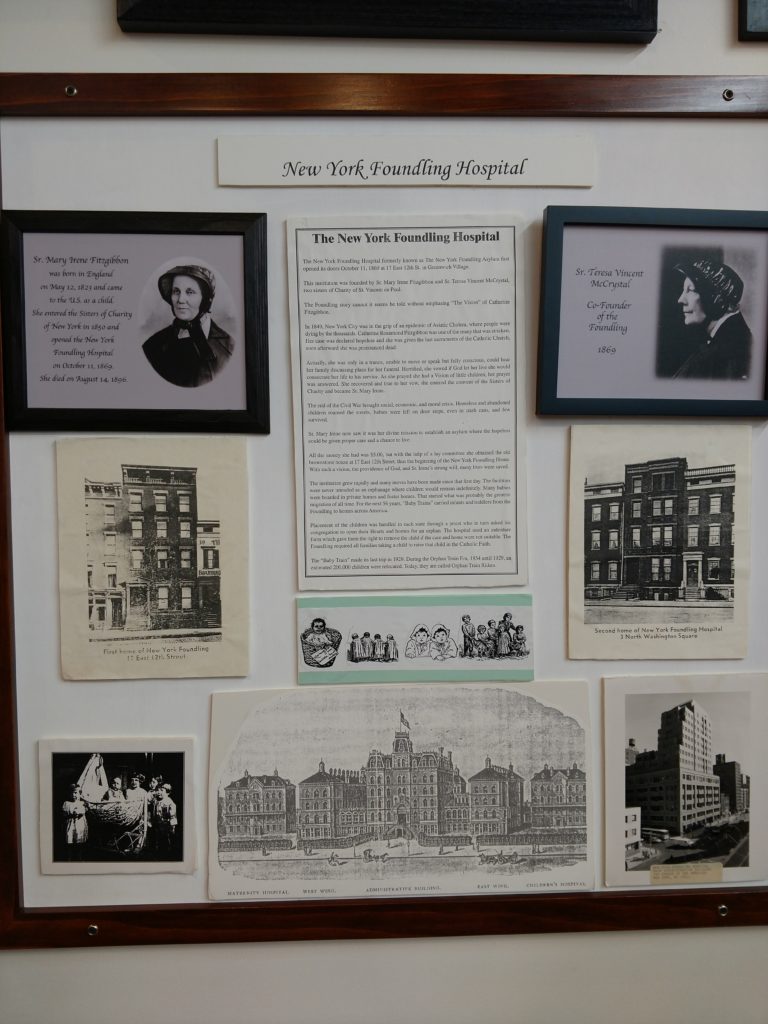
This article concerning how this began is very interesting ! In 1849 New York City was besieged by Asiatic Cholera and people were dying by the thousands. One of the sisters, as a young teen was expected to die. She had a vision and made a promise to God to look after the children if she survived.
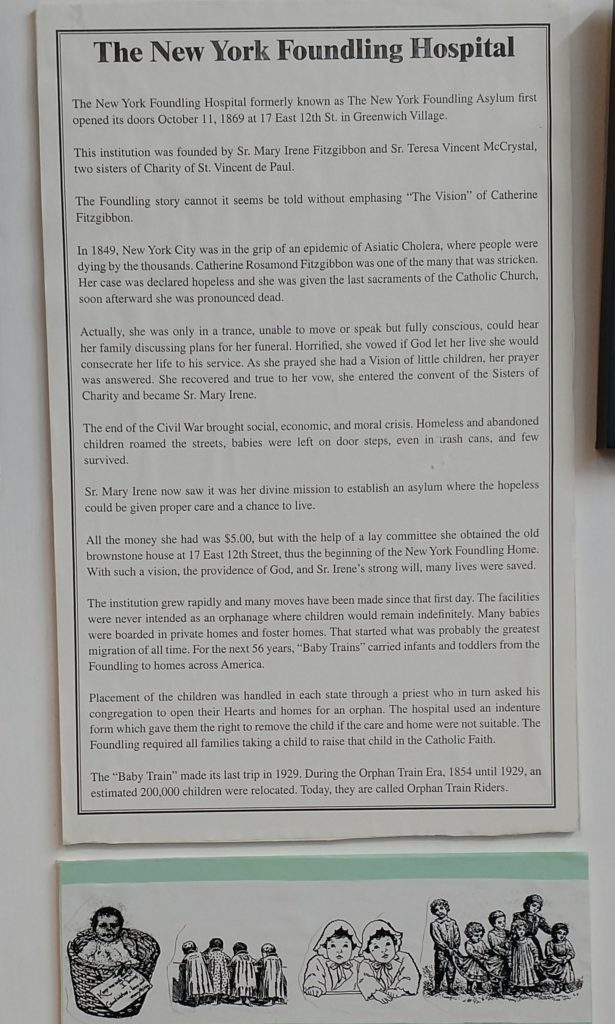
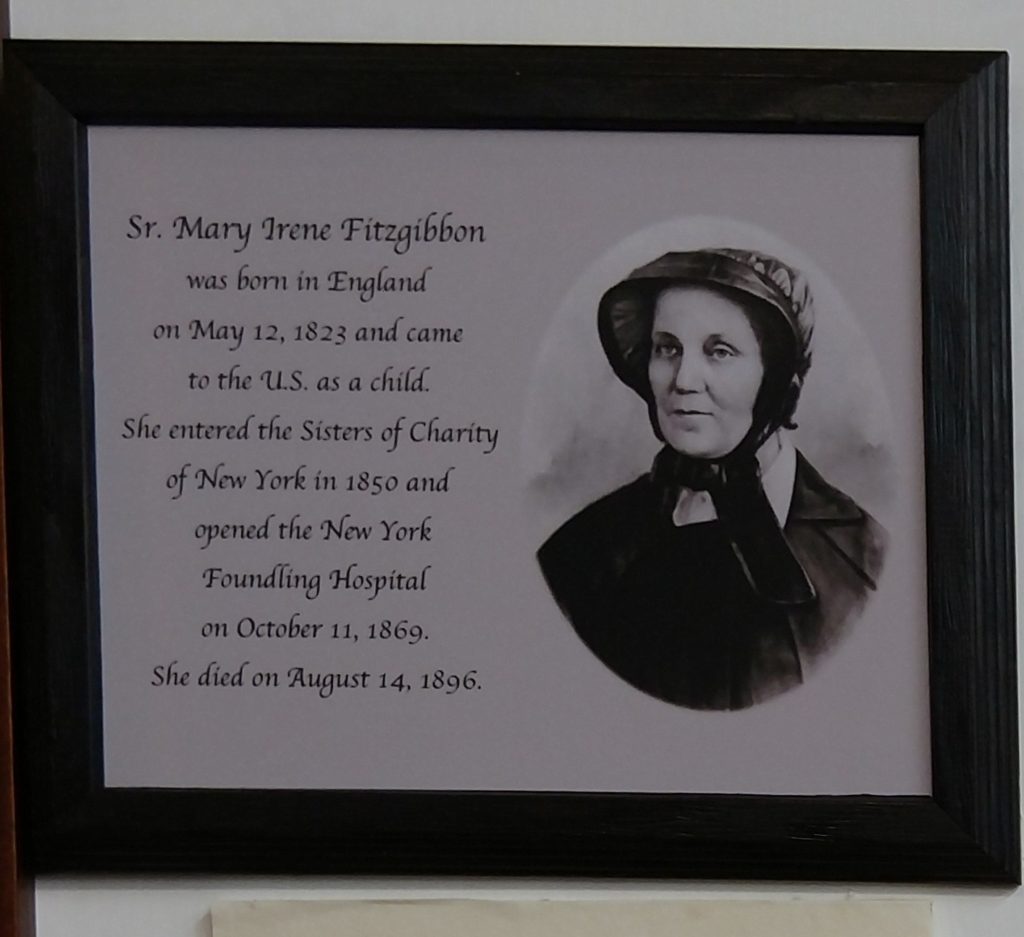
She purchased a brownstone home with $5 she was able to raise. Today, that would be the equivalent of $1, 913.45.
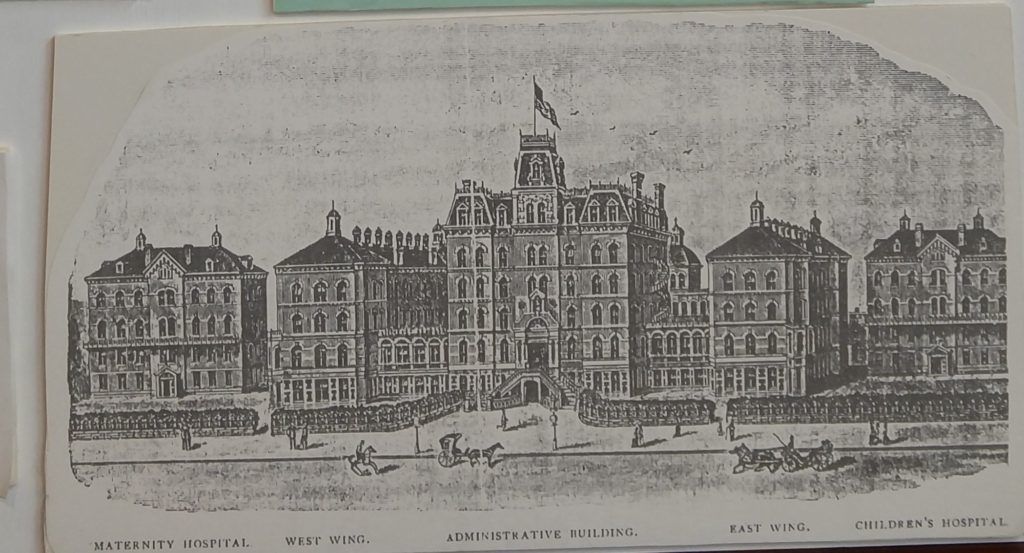
After the Civil war, the economy and social structure were in such dire straits that in addition to young people running the streets and homeless people, babies were being abandoned on doorsteps and in trash cans ! Few survived. These babies was the population that sister Mary Irene Fitzgerald wanted to save with this hospital. Sister Teresa Vincent McCrystal co-founded it with her. It was successful then and continues to expand even now.
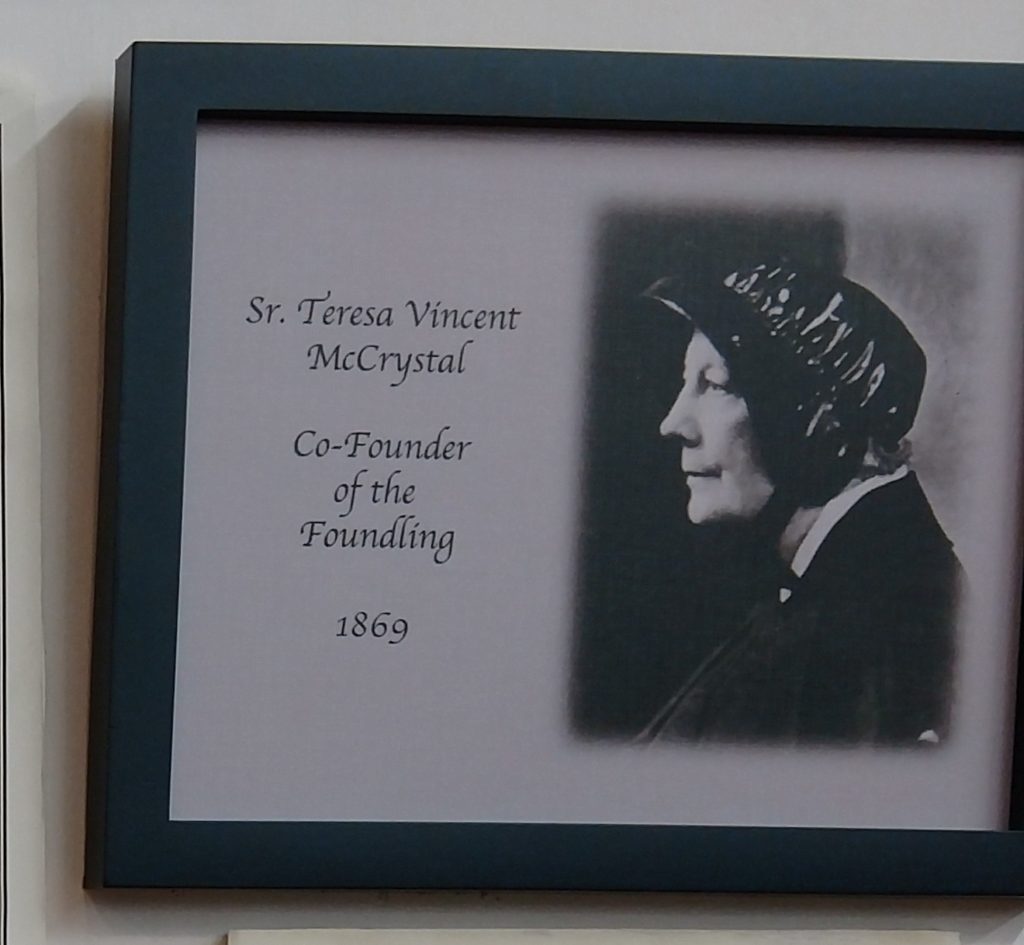
What I thought was interesting and so empathic, was how the babies were allowed to be dropped off. There was a sheltered side door to the building. Different sisters remained inside sitting there continuously. When the door opened the sister would welcome the person inside. The baby was laid in the cradle in this picture. I cannot imagine how hard it must have been to give up a child and sometimes children.
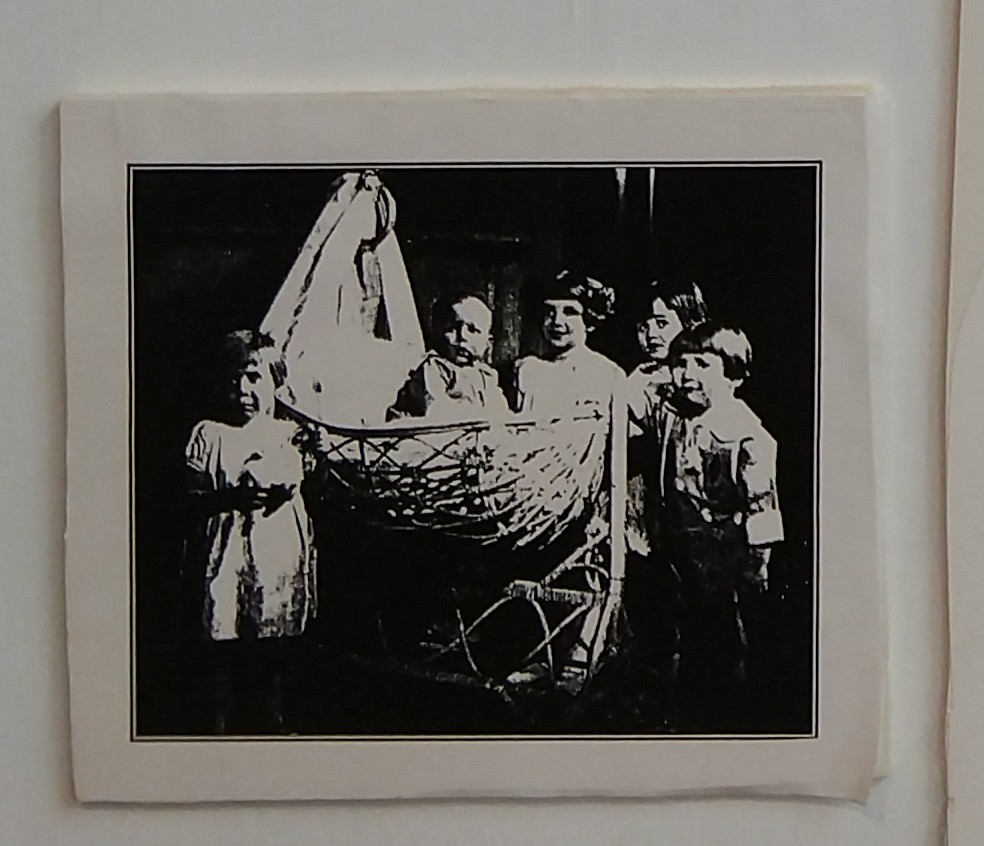
The parent bringing the baby had to agree to allow the child to be raised by someone else and had to sign papers accordingly. The child’s name was also recorded and the parent’s name if they gave it. They kept careful records. Sometimes an older brother or sister was also left in their care but they were very young. The babies were cared for in foster homes and given health care until they were old enough to ride the train. Siblings were kept together.
Because this was all within the Catholic church, they already had an excellent pathway in place by which to place these children. Pastors in churches in western states were encouraged to speak to their parishioners about the conditions in New York City and encourage them to adopt or take in a child or baby. To do so, they had to apply through the priest. Because the priests often knew their congregation members well, and parishioners knew each other, they would know if the applicant would make a fit parent. This was quite different from the Children’s Aid Society!
If the applicant was accepted and they had the means to care for the child, this information was sent to the hospital. When the babies, toddlers and siblings made their way west on the train with adults, they had numbered tags listing their names. They were met at the train stations by the church’s pastor and the adopting parents. Then the matchups and introductions began..How much nicer than having the kids line up, people perusing them and then saying ” I’ll take this one…” !! And splitting up siblings as well.
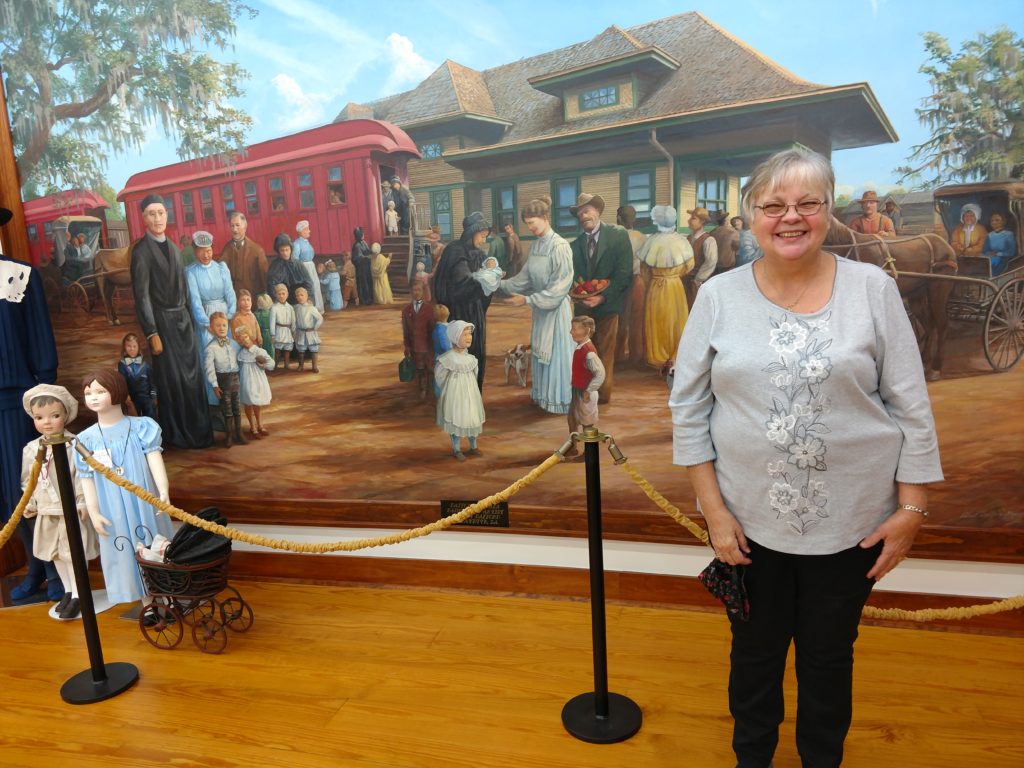
This painting does more than illustrate the scene at the train station as the children arrived. Every person in this painting is an actual person who was involved either as a child or an adult with the train immigration. This was all created off of photos brought in by families. Every single person in the picture can be pointed out and named. What a wonderful undertaking. Really unique.
One of the best features of the Foundling Hospital is that it had follow-up. Every year people came to assess the health and living situation of the child. They were expected to be able to go to school when they were old enough and they had to have adequate health care. And you know the parishioners kept track of each other too, when possible. Our volunteer, Barb, told me of one unfortunate situation that was shared by one of these families.
Their child had a rash that they could not clear even as it grew to a toddler. They had tried all kinds of healthcare suggestions but to no avail ! Because of this, the baby was eventually taken away from them because of suspected poor care. This was not the case and the parents were heartbroken! Looking back, they now think the baby probably had eczema!
Photos are placed all along the wall of the children that came on the train and if possible, a photo of them as an adult. These were professionally put together and framed. It was fascinating. Some children were adopted and took their parents name. Others were not but still remained members of the family for life. Some were truly fostered and left home at 18.
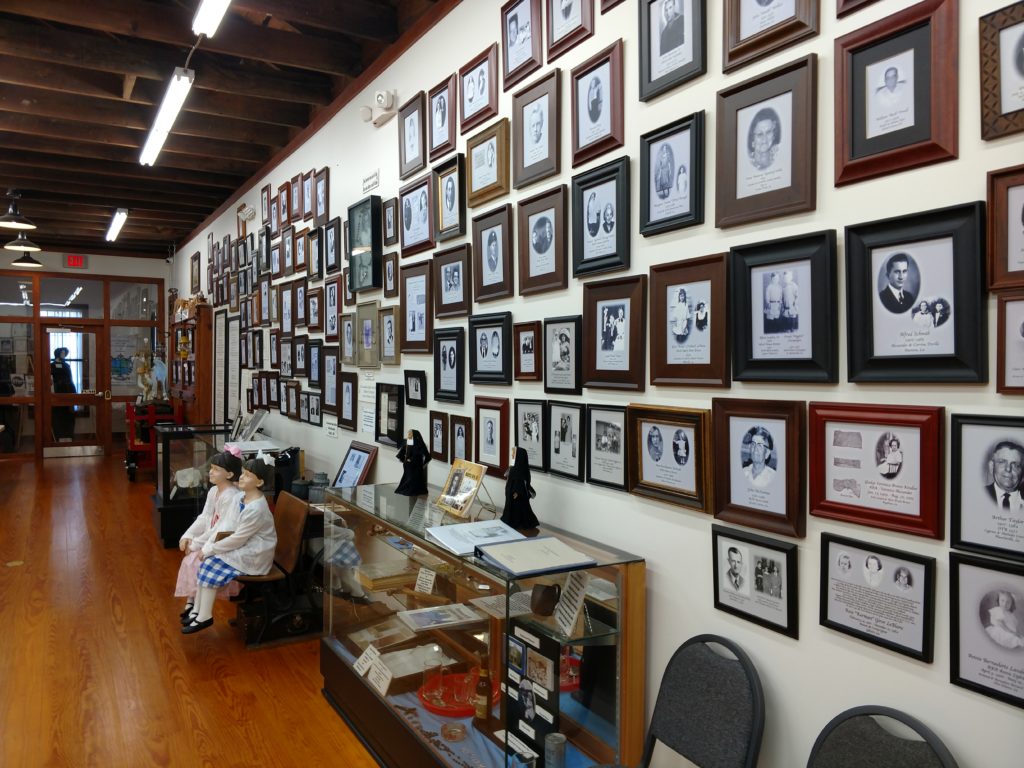
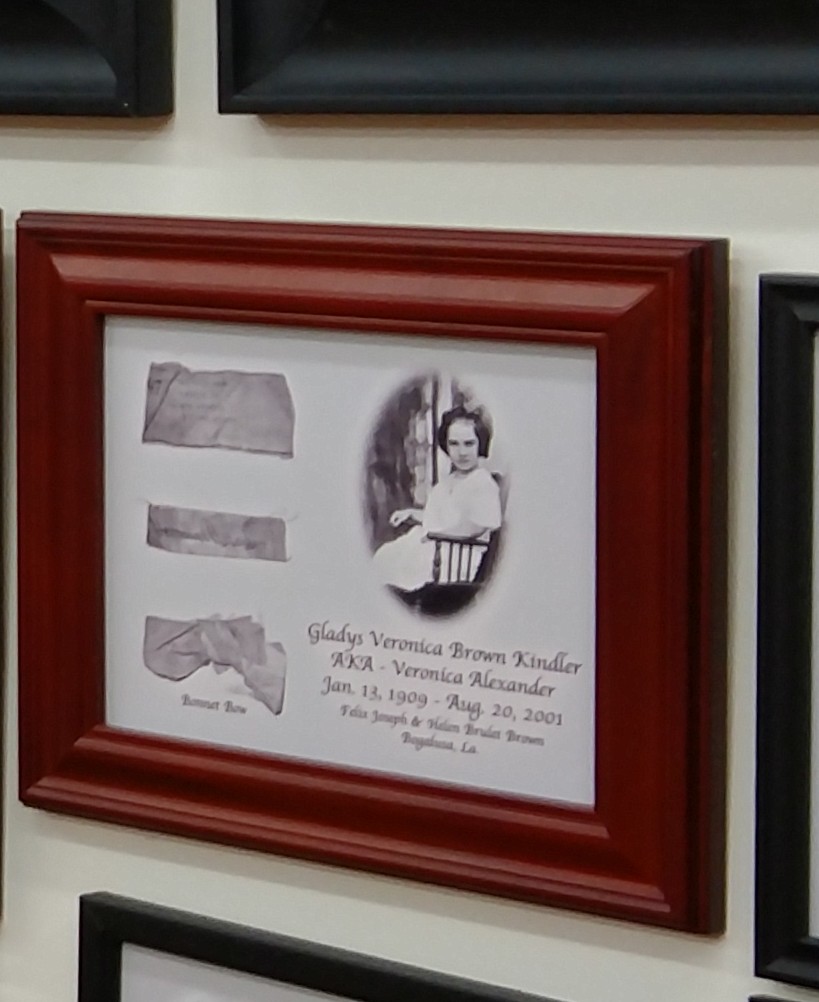
Lived To See Museum Opened !
One very unique individual, named Alice, lived to be 98 years old, was one of the babies that arrived on the train AND lived to see the opening of this museum commemorating that time! The photo of her portrays a pretty vibrant woman I think. She chose all the items that she wanted placed in that framed enclosure. The clothing is what she wore either when she arrived or as a toddler. She also included a little pink frame but never said why and the family does not know why. So a personal memory. Her photo is from a party at the assisted living home. She was voted the queen for the party!! 🤗
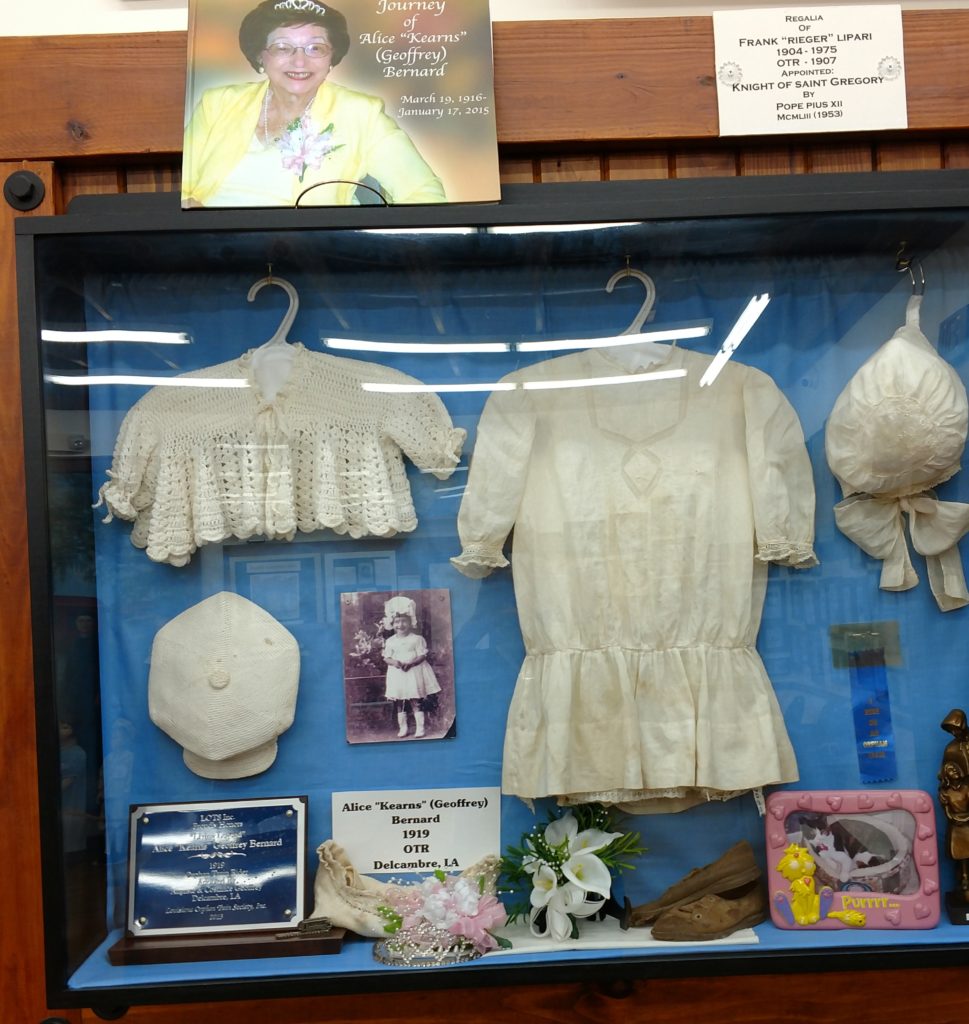
we were there a little over an hour. There was so much to see. And every single object there had a history and a story. It was amazing.
Until I read about this in brochures in Louisiana, I had no idea this had even taken place. I don’t know where I missed it in history, but I did. I’m wondering if any of you knew about it?
So, that is a synopsis, albeit a lengthy one, of the missing two weeks in November! Whew!